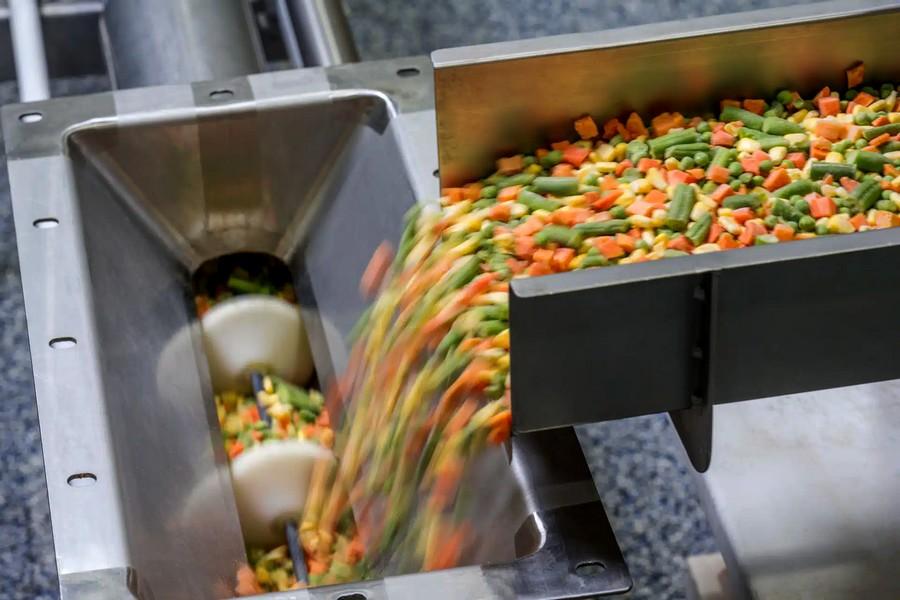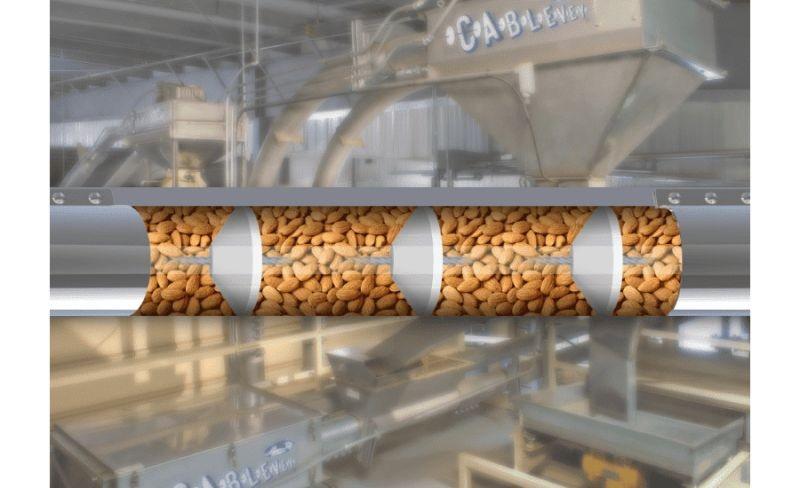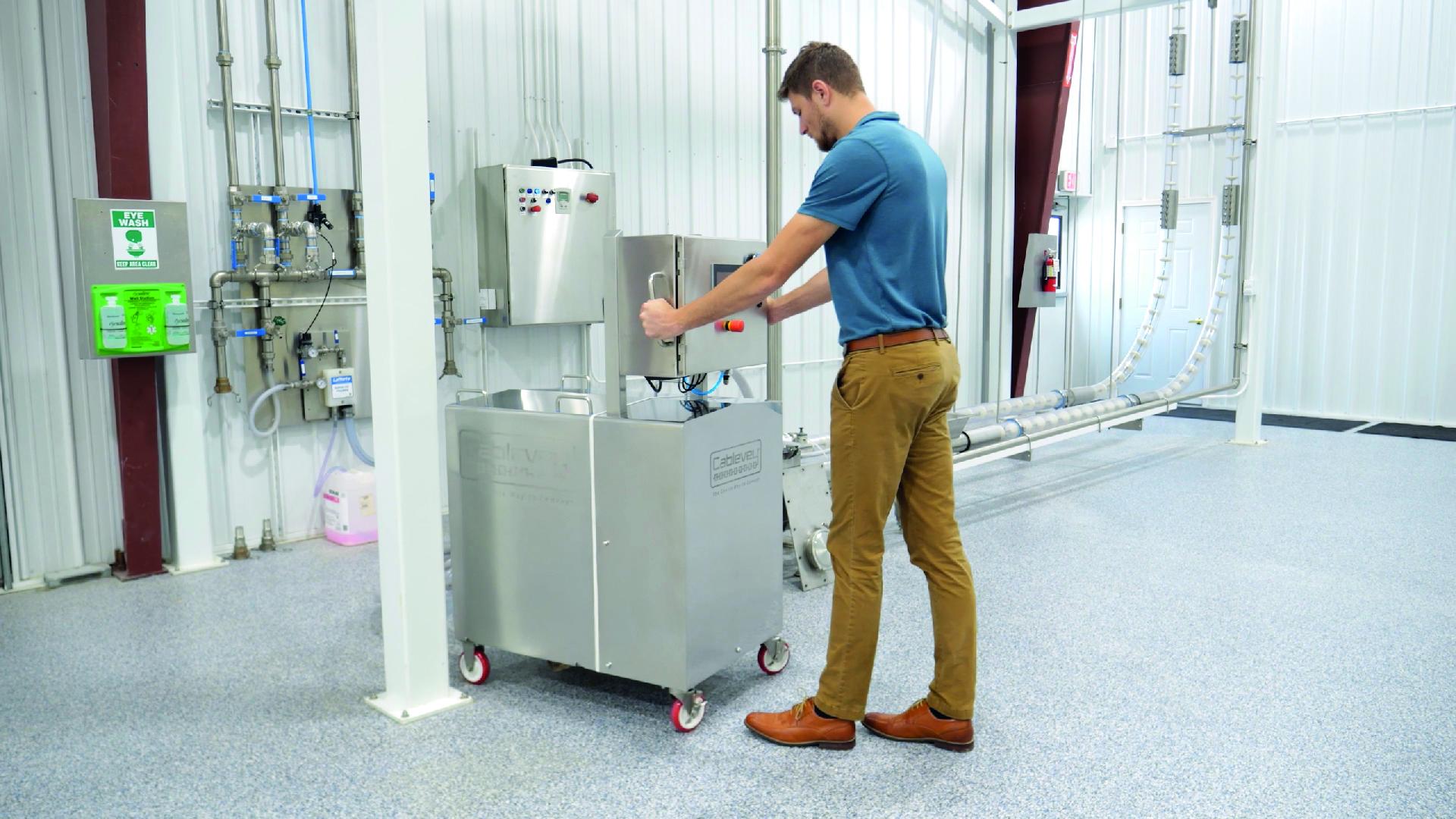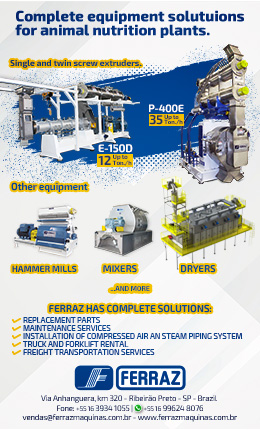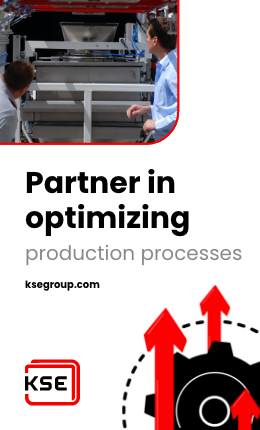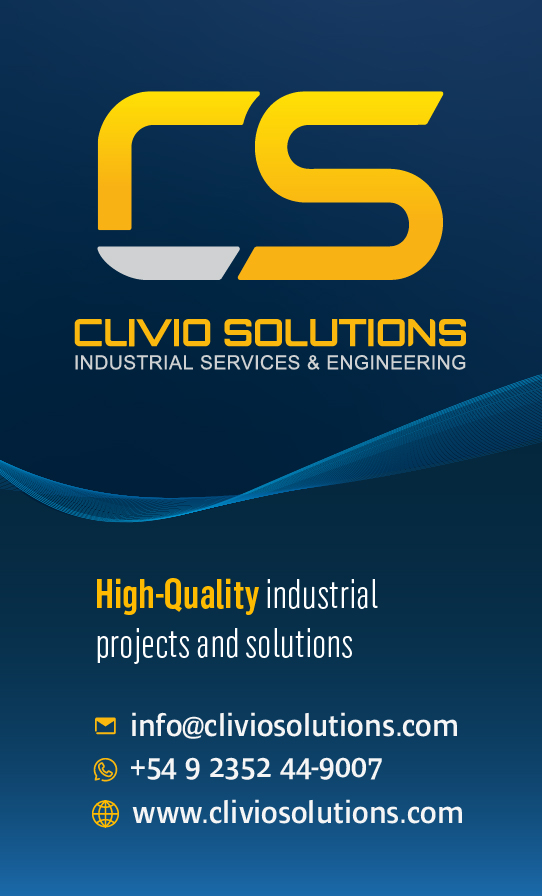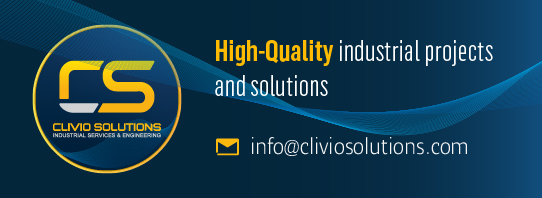Automated conveyor systems play a vital role in virtually every stage of food processing, from transporting raw ingredients to packaging finished products. What's more, in the food and beverage industry, hygiene is of the utmost importance. That's why stainless steel conveyors are such a popular choice in this sector (especially for conveying food).
Stainless steel is easy to clean and disinfect, making it the ideal material for conveying foodstuffs in accordance with FDA regulations. In this blog post, we will explore the use of stainless steel construction conveyors in the food production industry in more detail. We'll also look at some of the benefits of using this type of conveyor and explain how you can keep it clean and sanitary
What is stainless steel?
Let's start by taking a closer look at stainless steel. This is an alloy of iron, chromium, and, in some cases, other metals such as nickel and molybdenum. The main feature of stainless steel that makes it so suitable for food handling is its resistance to corrosion. This means that it won't rust when it comes into contact with oxygen. Regular steel (carbon steel), when exposed to oxygen, will transform into iron oxide (rust). Rust is porous and can flake off, becoming an excellent source of contamination. Stainless steel, on the other hand, forms a protective chromium oxide layer on its surface that prevents oxygen from reaching the iron beneath. As a result, it is much more resistant to corrosion than regular steel. What's more, stainless steel is also non-toxic and non-allergenic, which is important when you are conveying food products.
{{editor}}
Benefits of stainless steel conveyors
Corrosion resistance is just one of the many benefits of using a stainless steel conveying solution in food processing. Let's take a look at some of the others:
No product contamination – Unlike other materials that degrade over time and release particles into the product, stainless steel is inert and won't contaminate the conveyed material. It is also non-porous, meaning bacteria and other contaminants cannot become trapped on the surface.
Easy to clean and sanitize – Because of its smooth surface, stainless steel is very easy to clean and disinfect. This is essential in the food industry, where hygiene is of paramount importance. We'll get into more detail about cleaning stainless steel conveyor solutions later on.
Doesn't change food flavor – Outgassing is a phenomenon that can occur with certain materials, whereby they release gasses that can change the taste of food. Stainless steel is completely inert and doesn't outgas, so you can be sure your product will not be affected.
Resistant to high temperatures – Stainless steel can withstand high temperatureswithout being damaged. This means it can be used in applications where the product being conveyed is hot.
Resistant to low temperatures – Just as stainless steel can withstand high temperatures, it is also resistant to low temperatures. This means it can be used in applications where the product being conveyed is frozen.
Of course, these are not the only benefits of using a conveyor system for food made from stainless steel. Stainless steel is also a very strong material that is able to support heavy loads, making it ideal for use in the food industry.
Is a stainless steel conveyor sanitary?
To start answering the question of whether stainless steel food processing equipment is sanitary, we first need to understand what the term 'sanitary' means.
In the food industry, the term 'sanitary' refers to an environment or piece of equipment that is free from contaminants such as bacteria, viruses, and other microorganisms. This is different from the term 'clean,' which simply refers to the absence of visible dirt. A piece of equipment can be clean but not sanitary, for example, if it has been cleaned with a cleaning solution that is itself contaminated.
So, are stainless steel conveyors sanitary?
The answer is no – no material is inherently sanitary. However, stainless steel is one of the most hygienic materials that you can use in food handling. This is because it is non-porous and non-absorbent, meaning that bacteria and other contaminants cannot become trapped on the surface. It is also made for easy cleaning and disinfection.
That said, even stainless steel conveyors can become contaminated if they are not used and maintained properly. It is important to remember that bacteria and other microorganisms are everywhere – on our skin, in the air, and even on stainless steel. If left untreated, these contaminants can quickly multiply, compromise food safety, and cause foodborne illnesses.
This is why it is so important to follow good hygiene practices when using stainless steel conveyors. In particular, you should ensure that the conveyor is cleaned and disinfected regularly, even if it is made of a food-grade material.
Cleaning and sanitizing stainless steel conveyors
Each facility has its own cleaning and sanitizing procedures developed according to the products being conveyed and the level of contamination risk. However, there are some basic steps that you can follow in cleaning and sanitizing your stainless steel conveyor:
Remove loose dirt and debris – The first step is to remove any loose dirt and debris from the surface of the conveyor. The reason why it is important to do this first is that you don't want to spread contaminants around when you are cleaning. You can remove loose dirt and debris by brushing, vacuuming, or using compressed air.
Pre-rinse – After you have removed the loose contaminants, you should pre-rinse the conveyor with water. This helps to remove any remaining impurities from the conveyor surface.
Apply cleaning solution – Which cleaning agent you use will depend on the type of contaminants present and the manufacturer's recommendations.
Rinse – Once you have applied the cleaning solution, you should rinse the conveyor with clean water. This helps to remove any remaining cleaning solution and contaminants from the surface.
Inspect – Before sanitizing, you should inspect the conveyor to ensure it is clean. In particular, you should look for any areas that may have been missed during the cleaning process.
Apply sanitizing solution – The final step is to apply a sanitizing solution to the conveyor. This helps to kill any remaining bacteria and other microorganisms. Once you have applied the sanitizing solution, you should rinse the conveyor with clean water.
Note that some sanitizing agents may not need to be rinsed off, so be sure to check the solution manufacturer's instructions.
Increase cleaning efficiency
It's no secret that cleaning, sanitizing, and maintaining conveyors can be time-consuming. In fact, according to our State Of Conveying 2022 report, 54% of food processing managers and engineers said that cleaning and maintenance are the most challenging aspects of conveying. Reasons for this include:
- Downtime – When conveyors are taken offline for cleaning, it can lead to significant downtime and lost productivity.
- Cleaning frequency – The more often a conveyor is used, the more often it will need to be cleaned. This can make it difficult to keep up with the cleaning times and schedule, especially if the conveyor is in constant use.
- Complexity – Some food product handling conveyors are more complex than others, which can make them more difficult to clean. For example, some conveyors have many nooks and crannies that can be difficult to reach.
Fortunately, there are methods you can use to increase the efficiency of your cleaning process. Have you come across clean-in-place (CIP) mechanisms?
Clean-in-place systems
A CIP system is a method of cleaning that uses special equipment to clean the interior surfaces of the conveyor without disassembling it. CIP systems are often used in the food and beverage industry, as they are an effective way to clean complex equipment quickly and efficiently. Cablevey offers two main types of CIP systems:
- Dry cleaning – Using brushes, air knives, urethane wiper discs, and special sponges with sanitizers. Dry cleaning is typically used for conveyors that move material that is not wet or sticky.
- Wet cleaning – Using water jets, sanitizers, and detergents. Wet cleaning is typically used for conveyors that move wet or sticky material.
In this day and age, where every minute counts towards productivity, a CIP system can make a big difference.
the conveyor type matter?
If you choose a stainless steel conveyor for your food processing plant, does the type of conveyor matter? The answer is yes; of course, it does. The material the conveyor is made of is just one small part of the equation. You also need to consider the environment in which the conveyor will be used and the type of product that will be moved on the conveyor. Here are some common food manufacturing conveyors:
Belt conveyor
Perhaps the most widespread of all conveyors, belt conveyors are generally used to transport light to medium-weight products. A belt conveyor is composed of a belt that rests on two or more pulleys, which in turn rotate on shafts. The pulleys and shafts are powered by an electric motor. The belt on this type of conveyor can be made from a variety of materials. You can get plastic belt conveyors, rubber belt conveyors, and even metal belt conveyors. Not all of these represent a food-grade conveyor, though. Benefits:
- Good for fragile materials
- Can transport a variety of products
Drawbacks:
- Not for steep inclines or vertical conveying
- Not for wet or sticky products
- If not enclosed, it poses a high risk of contamination
Bucket conveyor
Bucket conveyors, or bucket elevators, are composed of a series of buckets that are connected to a belt or chain. The buckets lift materials, such as grain, up to the top of the conveyor, where they are discharged into a chute. Even though horizontal bucket conveyors exist, incline conveyor options are more common, as they take up less space and can be used in a variety of settings.
Benefits:
- Low driving power – energy efficient
- Good for facilities with small floor plans
- Good for inclines and vertical conveying
Drawbacks:
- Ridiculously difficult to clean and maintain because of a lot of moving parts
Pneumatic conveyor
The main principle of material conveying in pneumatic conveyors is entrainment. In this type of conveyor, air is used to move materials through a system of tubes. A blower or a vacuum pump can generate the airflow.
Benefits:
- High conveying speeds
- Low preventative maintenance and cleaning costs
- Flexible design – suitable for a variety of settings
Drawbacks:
- Extremely hard on conveyed materials – material damage is common
- It requires a lot of power to control the speed
- Can be noisy
Tubular chain conveyor
A tubular chain conveyor is composed of a chain that runs inside a tube. Circular discs are evenly spaced along this chain, creating space between them for the conveyed material to fit into. The discs move along the tube, propelling the material forward.
Benefits:
- Fully enclosed
- Can be used for inclines and vertical conveying
- Gentle conveying
Drawbacks:
- Chain is in direct contact with conveyed material – high risk of contamination
- Difficult to clean and maintain
Tubular cable and disc conveyor
We saved the best for last. For specific material types, such as breakfast cereal, snack foods, nuts, beans, coffee beans, rice, and similar, tubular cable and disc conveyors are the best option. These conveyors work on a similar principle as tubular chain conveyors, with one major difference – instead of chains and discs, they use cables and discs. There is no direct food contact with the cable, which decreases the risk of contamination. Also, these conveyors are easier to clean and maintain.
Benefits:
- Fully enclosed
- Gentle conveying – suitable for fragile materials
- Extremely low risk of contamination
- Easy to clean and maintain
Drawbacks:
- Not for viscous or sticky materials
Which conveyor to choose?
A stainless steel conveyor system is only as good as the application it's being used for. Different conveyors are better suited for different tasks. To help you make a better decision, here are the top considerations you need to take into account:
Conveyor type – As we've seen, there are many different types of conveyors. Make sure to choose the one that's best suited to your needs.
Material type – Not all materials can be conveyed by all conveyors. Some materials are too fragile, while others are too dense. Make sure that the conveyor you choose can handle your material.
Conveyor throughput – The amount of material that needs to be conveyed will play a big role in deciding which type of food processing conveyor to choose.
Conveyor size and layout – Not every conveyor is suitable for every facility. The size of your facility and the layout of your production line will play a big role in deciding which conveyor to choose.
Some other considerations are the cost of the conveyor, the energy efficiency, and how easy or difficult it is to clean and maintain the conveyor.
Go for a sanitary design
We've already explained how no material is completely safe from contamination. Even if you choose a food conveyor system that's easy to clean, there's always a risk of bacteria and other germs getting into the food. That's why it's important to go for a sanitary conveyor design. A hygienic design minimizes the risk of contamination. It includes:
- Easy access for cleaning – The conveyor should be designed in a way that allows easy access for cleaning. All parts of the conveyor should be accessible for cleaning, and there should be no dead spots where bacteria can accumulate.
- No traps in the conveyor frame – The conveyor frame design has to prevent food from getting trapped in it. All food should be able to fall freely from the conveyor, without getting caught in any nooks or crannies.
- No areas where water can accumulate – The conveyor should be designed to prevent water from accumulating anywhere on it. All wet areas should drain quickly, and there should be no places where water can pool.
- No fasteners – Welds should be used instead of fasteners to prevent food from getting trapped in them.
It stands to reason that deciding exactly which type of stainless steel conveyor to choose for your food processing facility is a big decision. But with the right information, you can make the best choice for your needs.
Conclusion
Here are the main takeaways from this article:
- Stainless steel isn't sanitary by default. But it is an excellent material for conveyors because it's easy to clean and doesn't rust.
- The cable and disc conveyor is the best type of stainless steel conveyor for food processing applications. These food conveyors are fully enclosed, gentle, and have a low risk of contamination.
- When choosing an industrial conveyor, consider the type of conveyor, the material you're conveying, the throughput, the size and layout of your facility, and the cost.
- Make sure to choose a conveyor with a sanitary design to minimize the risk of contamination. A sanitary design includes easy access for cleaning, no traps in the conveyor frame, no areas where water can accumulate, and no fasteners.
Ready to buy a stainless steel conveyor for your food processing facility? Cablevey Conveyor can help you find the perfect one for your needs. Contact Cablevey today to get started
By Cablevey Conveyor
Source: All Pet Food
You could be interested: Countdown to Pet Food Conveyor Launch: Starting Up On Time and With Confidence
Conveying Systems
29/08/2023










